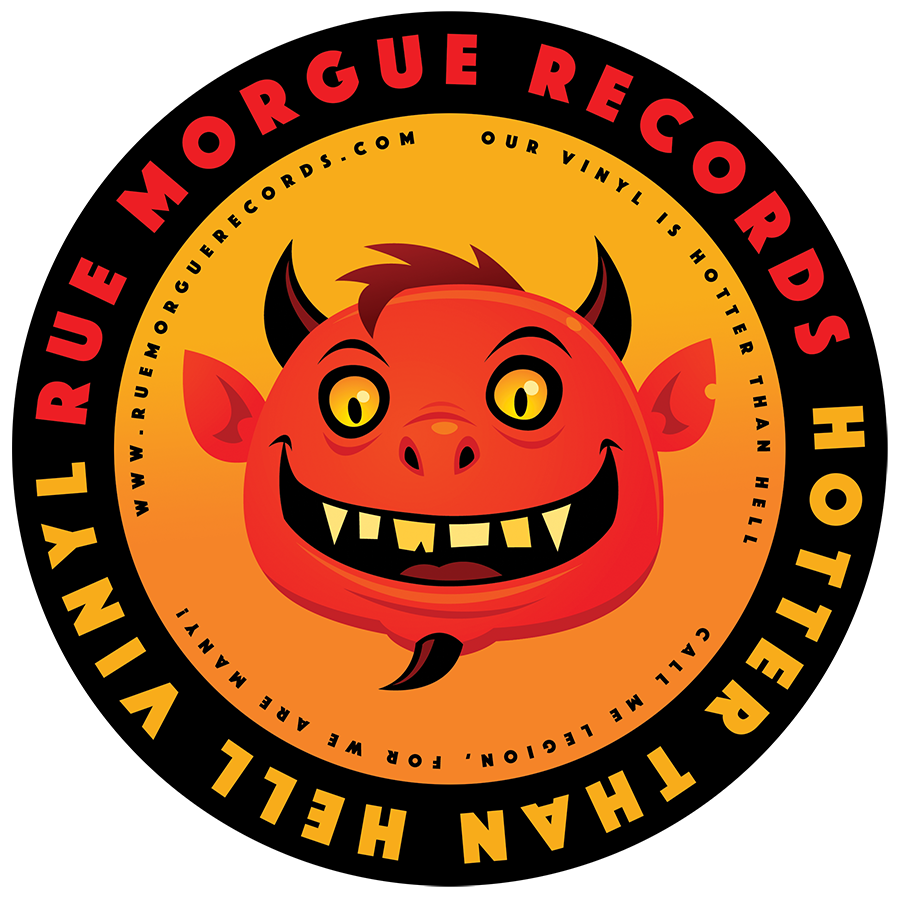My parent’s think I’m crazy!
And they hate the things I do…
It’s scary to realise that KISS Destroyer is 44 years old today. Even scarier to realise that yours truly was alive and kicking back then and this hot piece of wax was the first album the author owned and purchased with his own money. So yeah, this is one monumental album for me. It was monumental back then in the mid seventies, and it remains so to this day.
In 1975, I was 10 years old and first discovered KISS. I loved music at this time of my life and was seeking something that was mine and that could uniquely identify who I was. Those close to me know the tale, but as a youngster an older cousin of mine was having an 18th birthday party. I was fascinated by the collection of her friends in attendance. Sharpies, and punk looking people and other girls with silver glitter in their hair and eyes! It was magic! And they were all loving a song called Rock And Roll All Nite by a band called KISS. So much so, they played it over and over and over. All night long.
The very next day I asked my cousin if I could borrow some of her records. From the pile she offered, I picked through and selected KISS Alive! and the debut KISS album. I stared at the covers as if mesmerised. Putting the needle on the vinyl as KISS’ Strutter came blasting through the speakers… I was transfixed and taken away to a magical place. The sound coming out of the speakers, looked like the band on the cover. It seemed to be a perfect match of glitter and sparkle and four painted faces that married themselves with the sound they were creating. I was a KISS fan from that moment. I remain one to this day. (70’s KISS that is!)
I’m stupid and I’m lazy!
Man if they only knew…
A few months later and after a busy paper-round that saw me working my behind off morning and afternoon so I could save some money up to buy my first record.
I lived close to a record store called Pet Sounds in Malvern. One day whilst going to school, the small window at the front of the store was adorned with multiple covers of ‘The new KISS album… Destroyer’. I stared at it for as long as I could before being hurried off to school. This was what my money was going to buy. One day it would be mine!
At the princely sum of $6.99 cents, after a few weeks of paper rounds completed – I had my first record.
Ten years old, and KISS were my band! This is who identify with and would continue to do so to this very day!
How Flaming Youth…
Will Set The World On Fire
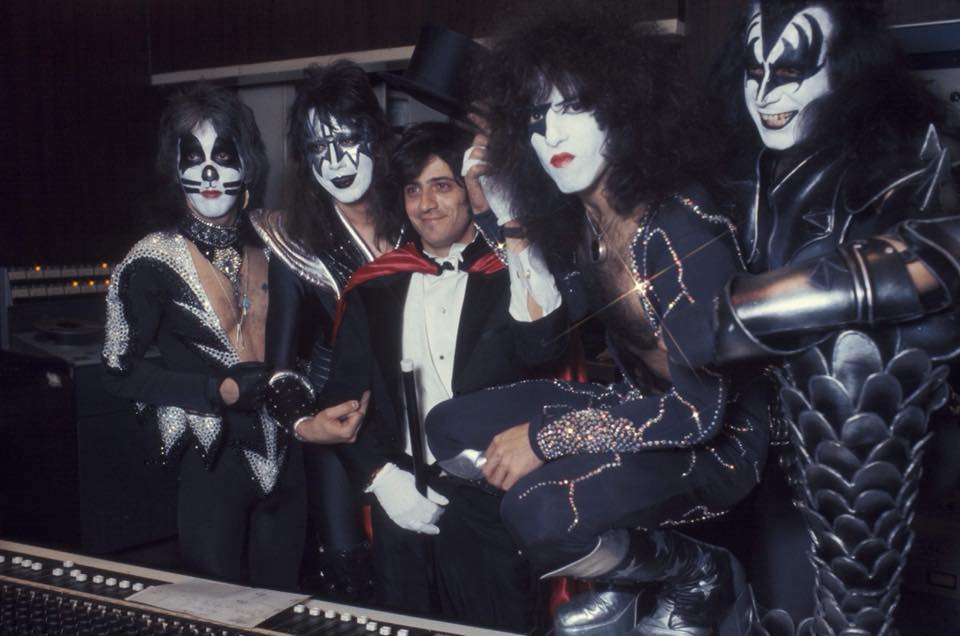
January 21, 1976 A&R Studios. KISS in the studio wearing prototype costumes for the Destroyer cycle. Pictured with the ringmaster Bob Ezrin (courtesy Jason Gallinger)
It was an incredibly brave move by KISS in 1976 to drop the ‘fuck me’, ‘suck me’ lyrics of their previous releases and experiment with a whole new approach. It took balls and with the monumental success of KISS’ Alive! double-album in 1975, KISS had plenty of them! Rhinestone and stud encrusted at that.
Enter Bob Ezrin.
The producer pushed the group to new heights, and helped them craft their commercial breakthrough. Although Alive! was the group’s first gold record, Destroyer was its first to sell a million copies in less than a year. It’s since been certified double-platinum.
Ezrin, who at the time, had done some incredible work with Alice Cooper, managed to take KISS onto a whole new level. Introducing so many new elements to the KISS sound, the band and management really did not know how their growing fanbase would respond to such a vast departure from the first three studio albums.
Before Bob Ezrin came into the scene, KISS was as raw and unhinged as a savage beast. The visual histrionics were matched by their blistering live and bombastic shows. They were feral! Which is not to say that Ezrin’s touch and influenced tamed them, but he took that savage beast and refined it into a glistening, slick and pristine diamond!
Ezrin: I don’t remember how much longer it was, maybe a year later, I got a phone call and was asked to go see the band play live in Ann Arbor, Michigan. They were playing to 9,000 or 10,000 pimply 15-year-old boys, who never sat down for the whole show. It was unbelievably energetic, exciting, theatrical, powerful and just fantastic. It was pure, balls-out, testosterone rock. What was missing for me was the broader audience. So after I told them I’d do the album, the underlying mission behind the record became that we were going to try and reach out to women, as well as young men, and we were going to try to expand past just heavy rock and into the world of pop.

pic: KISS with Bob Ezrin in the studio during the Great Expectations sessions. This is the first time KISS wore the prototype Destroyer costumes (courtesy Jason Gallinger)
Destroyer was polished, slick and grandiose in scope and substance. Every single note and beat throughout was tortuously drawn out from each member of the band. Ezrin was a taskmaster unlike any other produced the band had worked with. So much so, Ace Frehley ended up missing recording sessions, preferring to play cards with his friends than record lead breaks for the song Sweet Pain. (Guitar was handled by Dick Wagner).
Sonically, Destroyer is unlike any other KISS record but 1981’s Music From The Elder, again produced by Bob Ezrin. Layered with organically produced sound-effects, piano ghosting under guitar chords, atmospheric splashes throughout making KISS come across as Glam gods and superheroes. It sounds so majestic and features a plethora of songs that still permeate the band’s live set to this day. Detroit Rock City, King Of The Night Time World, God Of Thunder, Shout It Out Loud, Do You Love Me.
I stared at that album cover as a kid relentlessly and marvelled how it could be possible to marry visual and aural so damn perfectly.
The album was further improved with a recent remaster helmed by Bob Ezrin and released in 2012. Do seek that out as the definitive version of this album because the 2012 treatment makes it sound even bigger than it was in 1976.
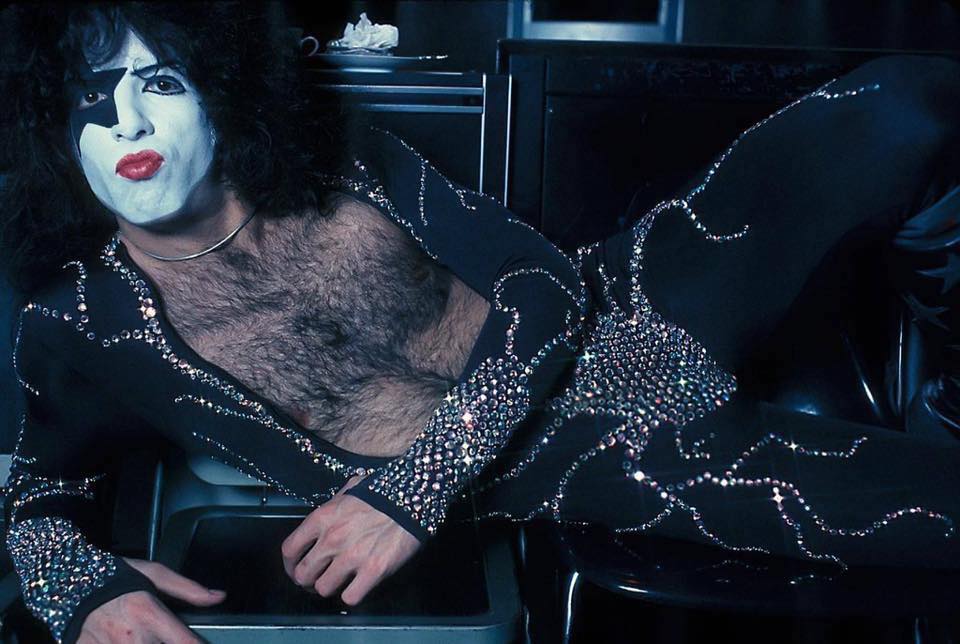
“It’s a cinematic album,” Paul Stanley says. “It’s an album that takes what was the norm and turns it into IMAX. The screen suddenly widened and what we were doing had such atmosphere.” (courtesy Jason Gallinger)
The Artwork By Ken Kelly
Fantasy artist Ken Kelly was just five years into his professional career when he received the assignment of a lifetime—painting the cover for KISS’ Destroyer album. It was a project that would give Kelly a tremendous professional boost, and make Kiss one of the most popular rock bands in history.
Kelly’s career started in 1970 with sales to Warren Publications, whose magazines included Famous Monsters of Filmland, Eerie and Creepy. Publisher James Warren and the magazines’ fans liked what Kelly was producing, and he soon became one of Warren’s busiest artists. “I was the most prolific artist Warren had,” Kelly confirms. “I did more covers than any other artist on staff.”
According to Kelly, it was KISS drummer Peter Criss who brought the artist to the band’s attention after seeing one of Kelly’s Warren covers on the stands. “I had always thought it was Gene Simmons, but Criss’s wife said it was he who was reading Eerie and Creepywhile Gene and Paul Stanley were reading Marvel comics,” Kelly reports. “ So I would say Peter Criss was fundamentally responsible for me ending up being the cover guy.”
Interestingly, Kelly wasn’t the band’s first choice as cover artist. They first approached fantasy master Frank Frazetta, whose ascending star was white hot at the time, but were unable to reach a financial agreement. Their search for someone who could paint in a Frazetta style led them to Kelly—who was related to Frazetta by marriage. “Frank Frazetta has always been in my family,” Kelly observes. “It was my need to make a dollar that turned me toward him because the only thing I had on earth was my talent as an artist. I didn’t know how much he would help me, but I knew he would give me some kind of direction, which he did.”
Upon getting the Destroyer assignment, Kelly met with KISS and Casablanca Records art director Dennis Woloch. The band and the record company were very specific about what the image should be: the four band members abreast, leaping at the viewer with fire behind them. Kelly was asked to provide a rough, and was given 30 days to deliver the final painting.
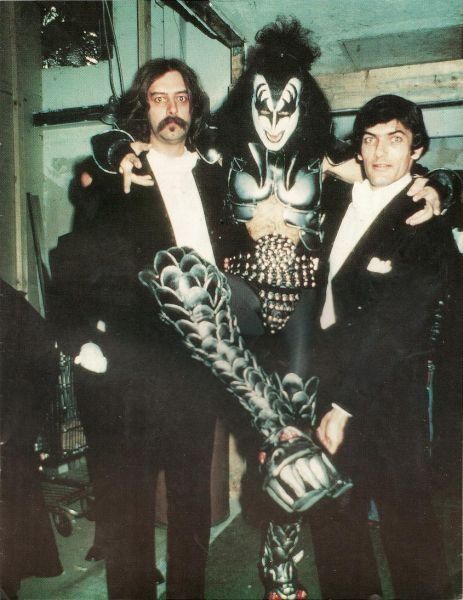
pic: Dennis Woloch, Gene Simmons and Ken Kelly
“Warren was publishing magazines every couple of weeks, so the turnaround [for covers] had to be very fast,” Kelly notes. “You had to come up with a concept, paint it, deliver it, and then you were on to the next one. So when Kiss came along, I was ready.”
Though Kiss had by then become a musical juggernaut, thanks in part to the huge success of the Alive! album, Kelly had never heard of the band when he was approached to paint Destroyer. At the time, he says, his musical tastes were more along the lines of The Eagles, Elton John and the Rolling Stones. “I honestly didn’t think they had a prayer,” Kelly says with a laugh. “I had just gotten out of the Marine Corps, and here were these guys in red lipstick, spandex and high heels. That was not my wheelhouse at all.”
Kelly’s opinion changed dramatically when he saw Kiss in full costume during a meet-and-greet event in New York. When the four musicians came out before the 100 or so people in the audience, the response was tremendous. “They were–and are–larger than life,” Kelly says. “Seeing them in costume, I knew right there that no matter what these guys did, they were going places.”
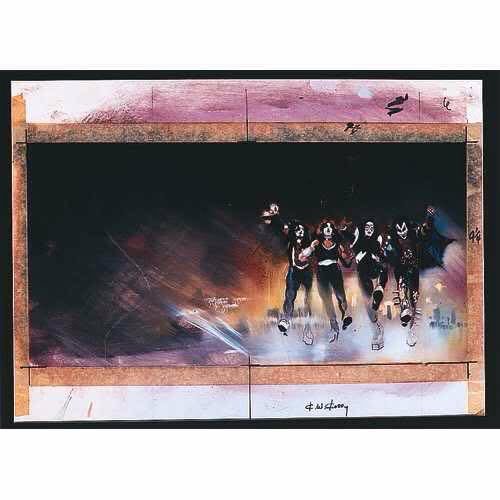
Kelly painted Destroyer in oil, using photographic slides of the band for reference, and delivered the work on deadline. But a few weeks later, he was notified that Casablanca Records had rejected the painting because it looked as if the band had caused the fire behind them. “They thought it was too violent,” Kelly explains. “It was 1975, and they didn’t want to launch such a large project with such a negative cover. I thought my career was over. That was one of the heaviest blows I’ve ever received.”
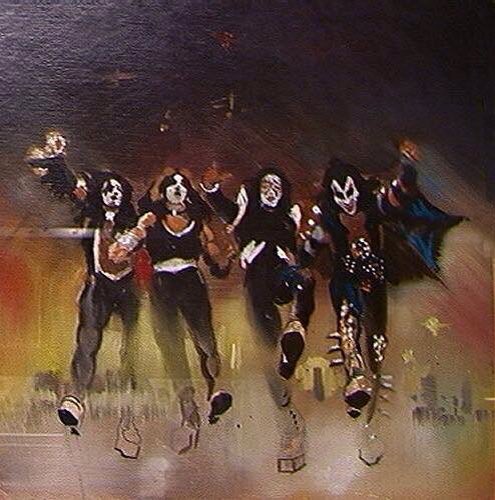
But Kelly was quickly reassured that everything was fine. He was asked to paint a second cover with a slightly different background, for which he was additionally compensated. The new cover also provided an opportunity for Kelly to paint the band in their new costumes. “It was a changing point in my career,” Kelly says of Destroyer, which was released on March 15, 1976 and certified gold a week later.
Destroyer: Resurrected (2012)
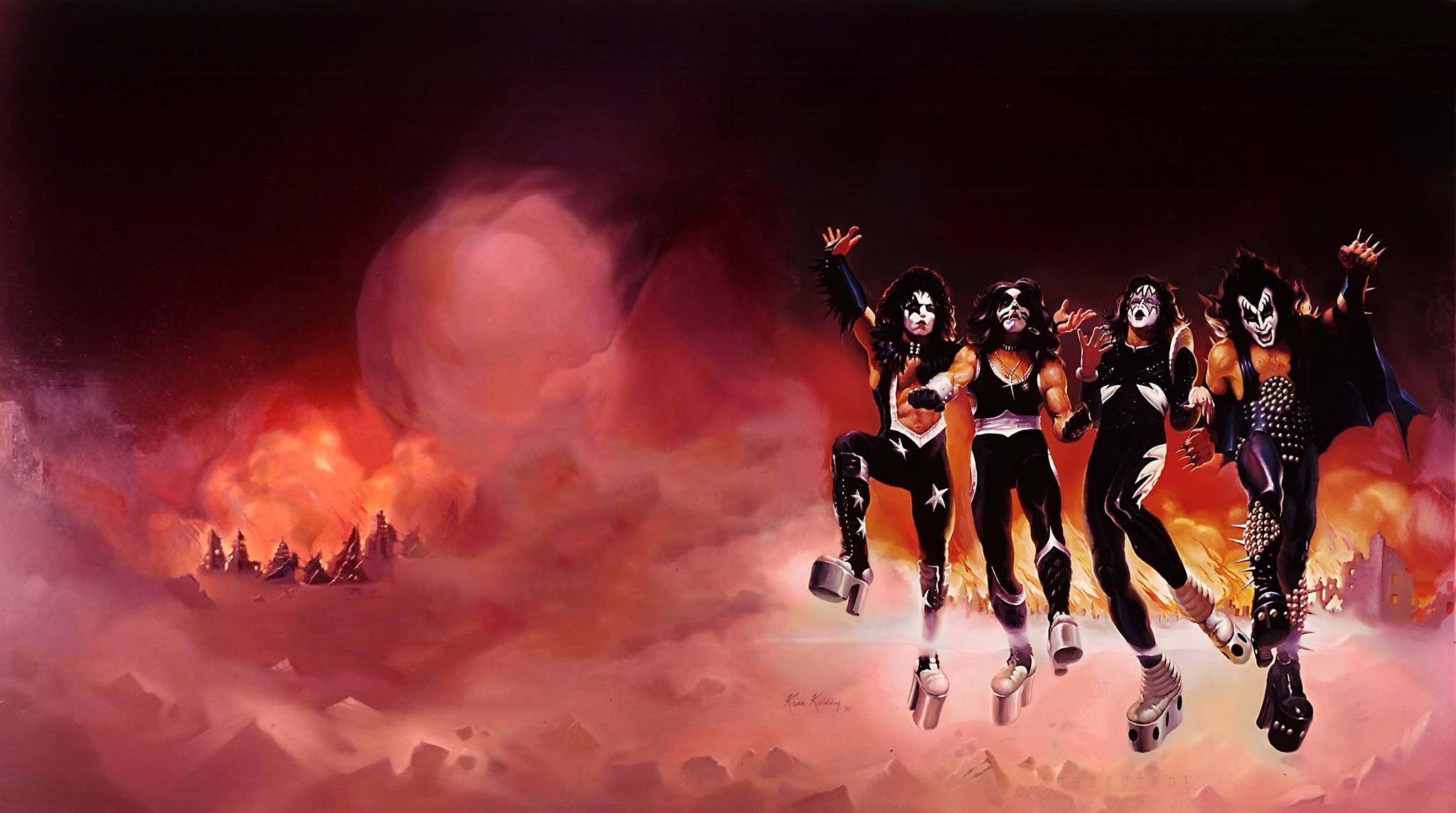
pic: the 2012 version of the painting re-done by Ken Kelly for the Destroyer Resurrected album. (It is signed 1975 but clearly NOT the original 1975 painting)
Destroyer – Resurrected is the band’s 1976 album remixed from the multi-track tapes by original producer Ezrin. Right off, the drums and bass guitar are louder, there are different effects on the vocals, and little differences on each song (for instance, there’s a loud shout at the end of “Shout it Out Loud”). While purists will howl in detest, this is not meant to replace the original version, but to give the album a little more of a modern sound.
This can be dangerous territory – change things too much and you lose the spirit of the classic record. But, Ezrin was part of this album’s creation and his new mixes are sympathetic to the originals. Take “Detroit Rock City” – the car sound effects are more modern, there are “get up, get down” backing vocals that weren’t in the original, and the car crash at the end really sounds like a BIG crash. “Do You Love Me” has bigger drums, louder backing vocals at the end, and the piano and bells near the close of the song are a lot more prominent. “Beth,” the band’s breakthrough hit, features an acoustic guitar throughout the song that was mixed out of the released version. On “God of Thunder” you can really hear what the kids are saying throughout the track.
Ezrin took on the project of remixing Destroyer after getting a hold of digital copies of the original master tapes.
“I honestly could not open it for the first few days,” Ezrin recalled in the liner notes of Destroyer – Resurrected, “It just sat there next to my console, smirking at me and defying me to jump back into ’70s one more time. My engineer, Justin Cortelyou, and I were finishing another project so we had a bit of an excuse, but the magnetic field around that box got stronger by the day. Finally, we got brave enough to mount the drive and open the session files.”

(courtesy Jason Gallinger)
One of the more noticeable differences is the drumming of Peter Criss. He beefed up the drum sound and brought them forward in the mix, giving “King of the Night Time World” more of a marching, rat-a-tat-tat feel throughout. Criss’ kick drum gives “Do You Love Me” the swagger that was missing from the original version.
The gem on the remix is without a doubt “God of Thunder.” Already highlighted by Simmons’ menacing, bellowing vocals and Ezrin’s heavy production, the bottom end got even more bite as Simmons’ bass pulsates through the speakers.
Another hallmark of the original “God of Thunder” that gave the song a certain “spooky” factor was the insertion of random, reverb-coated chatter from a couple young boys. That chatter was amplified a little more by Ezrin this time around and only added to the aura of the song. Who were those two boys in 1976? None other than David and Josh Ezrin, Bob’s sons.
Bob Ezrin added: “Justin and I worked mostly on making the album more immediate and modern sounding by bringing the drums closer and adding more bottom to the bass, making the guitars a little brighter and more present.”
There are a couple other treats for fans. In “Beth,” a ballad sung by Criss that debuted as a B-side but turned into a hit single, acoustic guitar parts were uncovered that augment the strings and piano arrangements nicely.
A track was added to the remix – an alternate version of “Sweet Pain,” which has an awkward, ill-fit guitar solo by lead guitarist Ace Frehley. The “Sweet Pain” that everyone has come to know from the original release actually showcases a solo by Dick Wagner, who was recruited by Ezrin to fill in for Frehley one day during the recording sessions. Wagner and Ezrin had known each other from Wagner’s days playing for Cooper throughout the 1970s.
Even though Wagner’s “Sweet Pain” appeared on the album in 1976, it finds itself being dubbed as a bonus track and tacked on at the end of the running order. Perhaps a minor inconvenience for fans looking to keep the integrity of track sequence. Another tweak is “Rock And Roll Party,” previously the spoken outro to “Do You Love Me” at the end of Destroyer, getting its own track this time around – but not a listing on the album.
“Detroit Rock City,” perhaps the band’s shining moment from a recording standpoint (“Rock And Roll All Nite” considered) and the leadoff track, got some doctoring from Ezrin. He was bugged by a botched lyric years earlier when Paul Stanley sung “down 95” instead of “doin’ 95” and he fixed it without a re-record. Yet he went too far by bringing up an unnecessary “Get up / Get down” at the end of the first break. To his credit, the infamous car crash at the end packs much more punch this time around and now bleeds over into the beginning of “King of the Night Time World.”
It’s worth noting that the digital downloads and the physical CD features a noticeable flaw on “Flaming Youth,” where five seconds in, a half-beat is missing. Not a deal breaker, but it takes a bit of luster off the product. (NOTE: Those who have purchased high-definition audio download of the remix report the flaw is not present).
The cover features the artwork from Ken Kelly that was intended 36 years earlier, but was instead replaced because the record company at the time (Casablanca Records) believed the background rife with burning buildings was too violent.
The Destroyer influence on pop culture
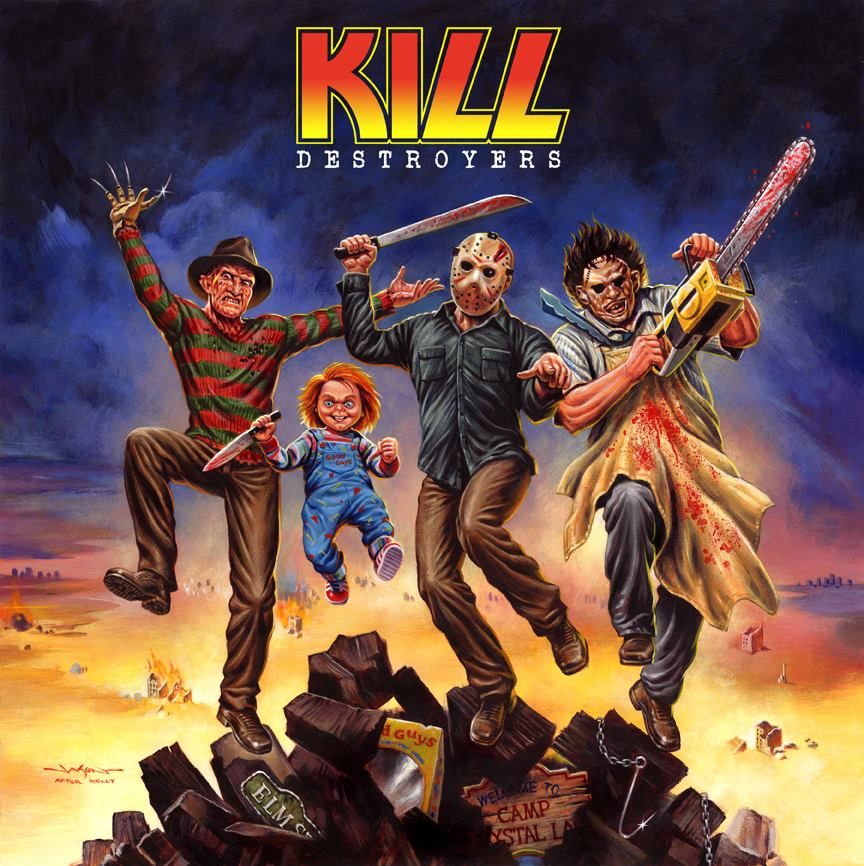
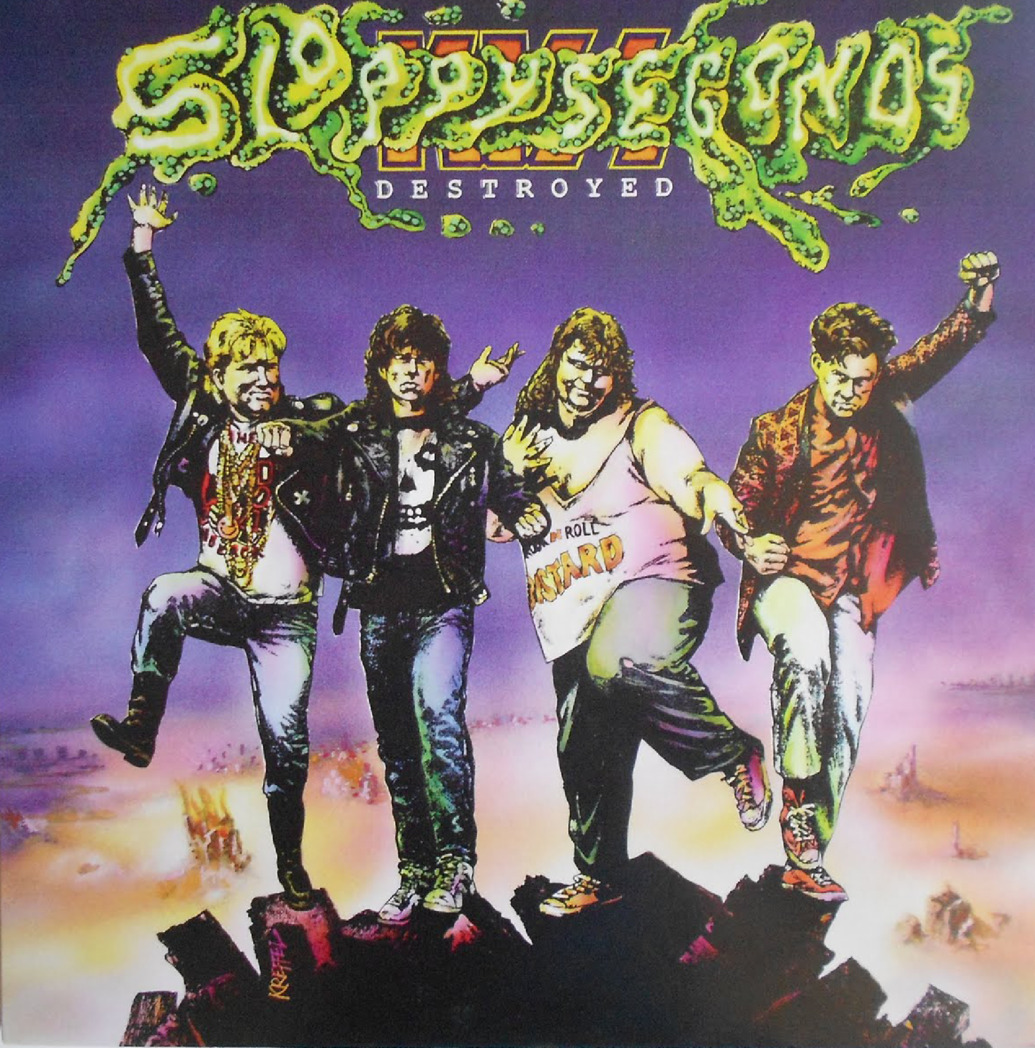
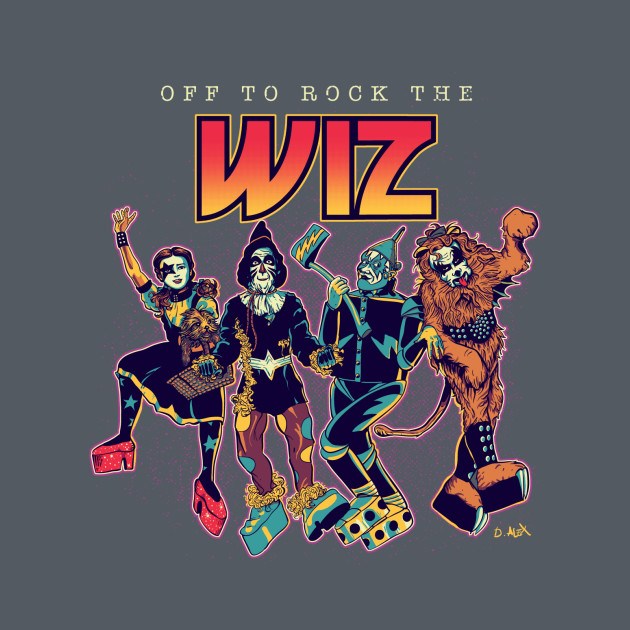
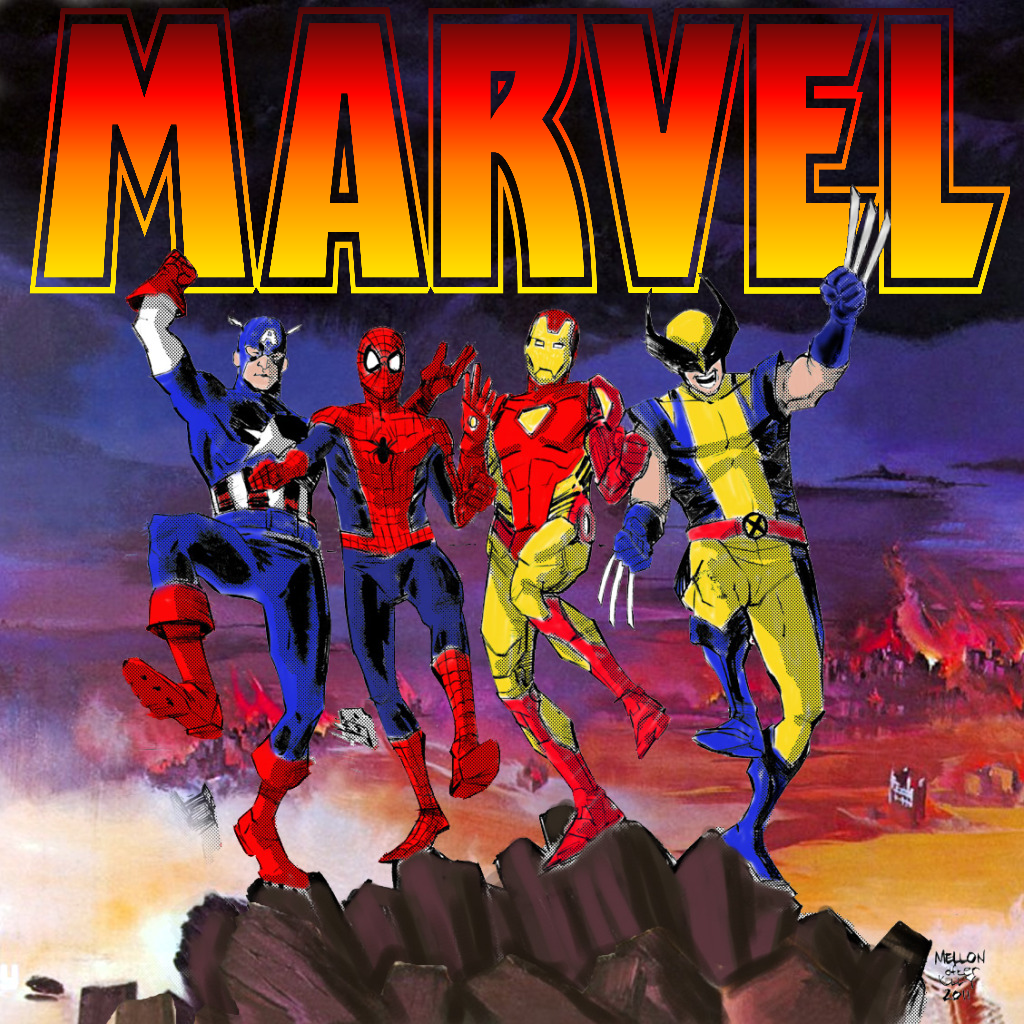
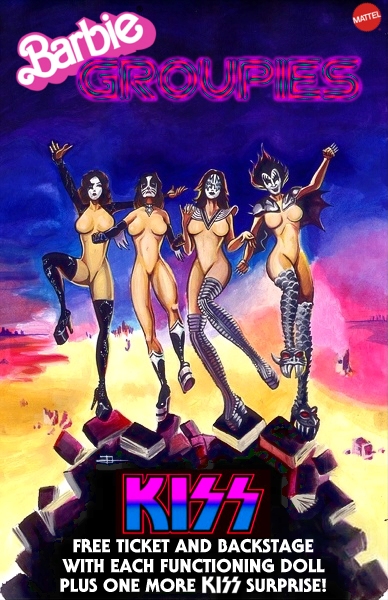
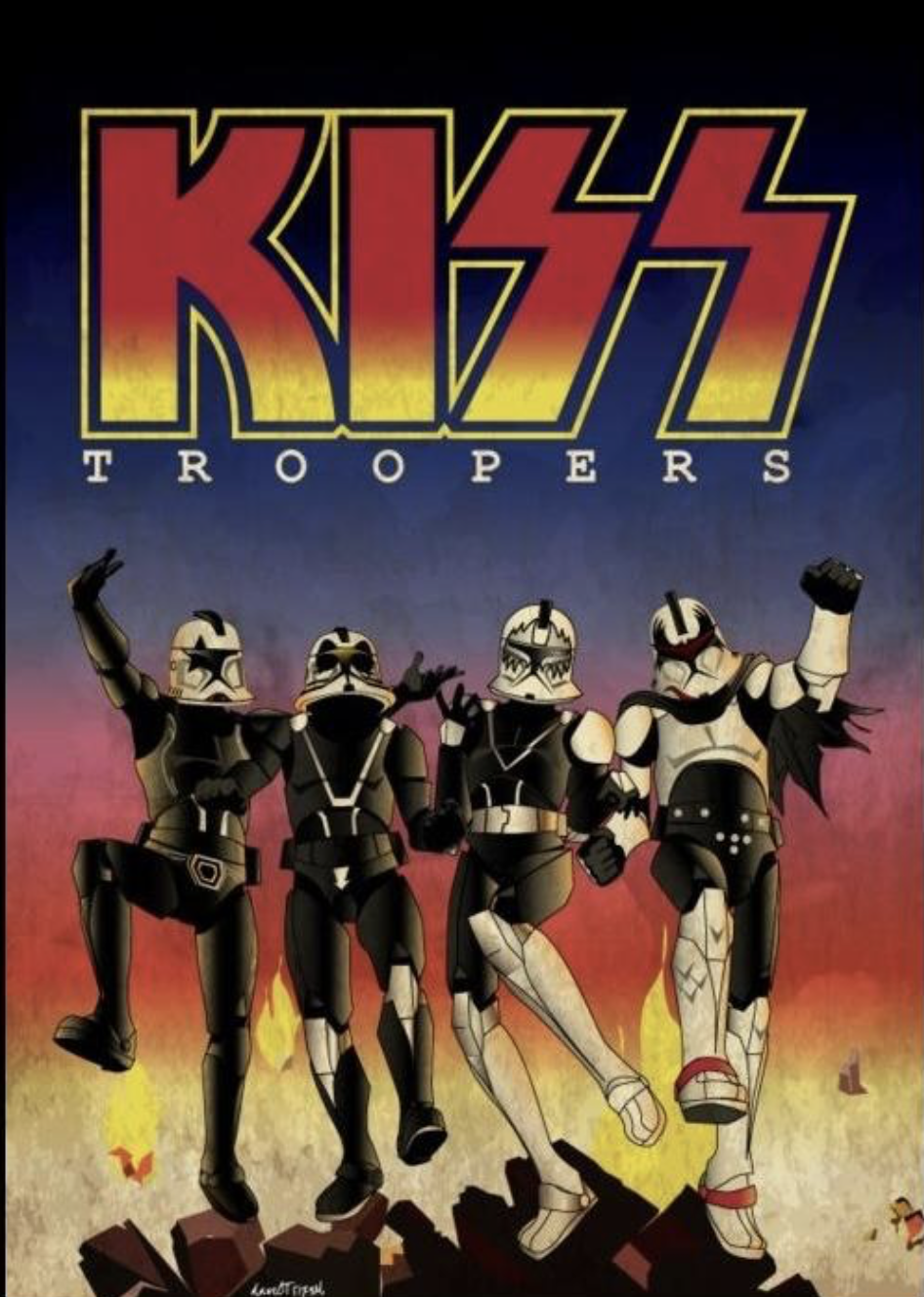

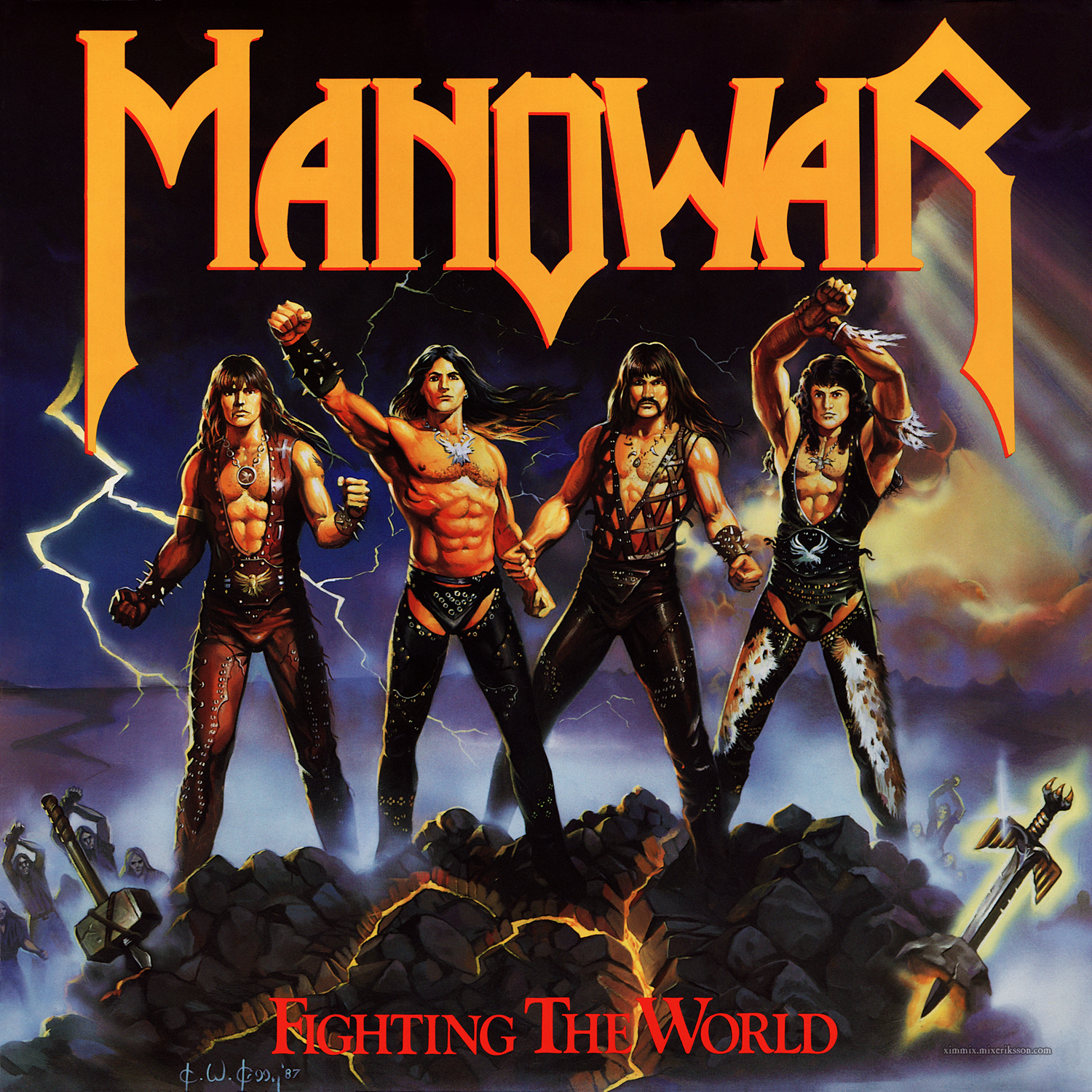
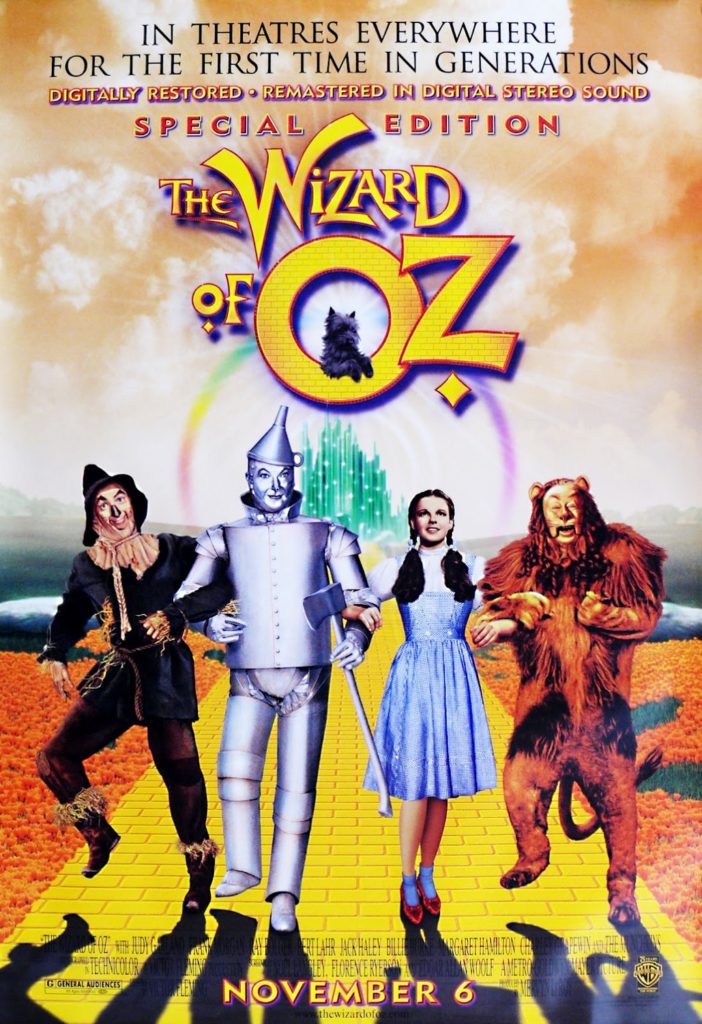
Join Us For Discounts, Contests, Rarities, Exclusives!
We won't spam you. At most 2 to 3 emails per month announcing specials, rarities, giveaways and discount offers! Trust us, it is worth your while! Feel free to join the generic Rue Morgue Records list or our KISS list. Choice is yours! Join both if you like!
One click away from forbidden knowledge! Do it!

